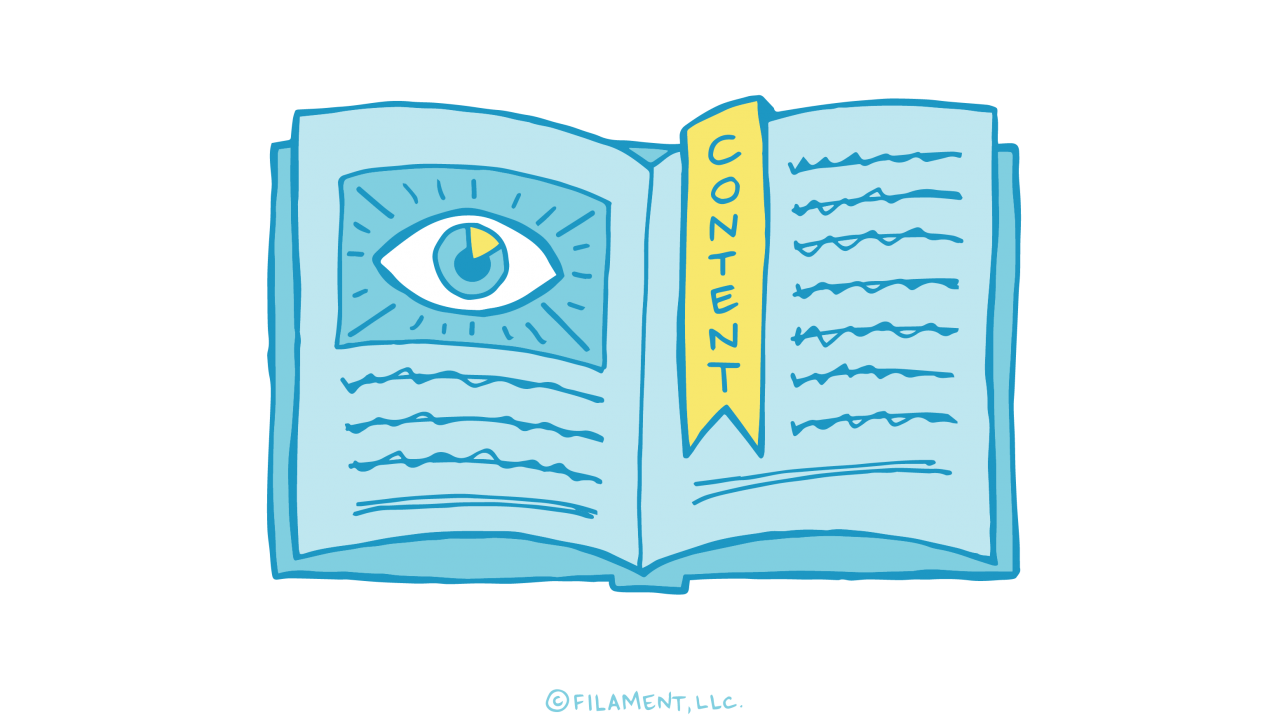Human beings have been telling stories visually since around 30,000 BCE, so it’s no wonder that visual storytelling is a powerful marketing tool. It’s common knowledge that visual content sends social media engagement on platforms like Facebook and Twitter through the roof. But what about visual storytelling in email marketing? Does it have the same effect there? Why or why not? How does visual storytelling work differently in email? We’ll answer these questions and more in the paragraphs that follow.
Your Brain on Visual Content
According to the SAGE handbook of political communication, “the brain processes visual information 60,000 faster than the time it takes for the brain to decode text.” In part, this ability is due to physiology. The processing of complex visuals can be pre-dated back nearly 300 million years, with the discovery of a fossilized fish, which used color vision. Modern humans have had this ability since they arrived on the scene some 200,000 years ago.
At the level of communication, the brain also relies of visuals. According to psychologist Albert Mehrabian, 93% of all human communication is nonverbal, and 90% of information that enters the brain is nonverbal. Our brains have evolved to process visuals—and to do it quickly in order to survive.
Text, by contrast, is fairly new to us. It wasn’t until the invention of the first printing press in the 15th century that reading and writing because more widespread. That’s only 560 years, compared to 200,000. No competition there.
What does all this mean? In a nutshell, visual storytelling is so potent because our brains are hardwired to process visual information. Processing text is relatively new to our noggins, so we haven’t developed the ability to process it as quickly. As a result, visuals are powerful tools for communication, be that via social media or email marketing. Visual content helps us understand things more quickly, grabs our attention, and has even been shown to influence human emotions.
Visual Content & Email
Visual content is not only easier and faster for the human brain to process, but it’s also a smart way to get more opens, clicks, and conversions. Check out these email stats:
Animated GIFs
Animated GIFs are a great way to visually tell a story about what a product does. When used well, they’ve been shown to increase engagement and conversion.
- According to an Experian survey from 2012, 72% of their clients who used animated GIFs and cinemagraphs experienced higher transaction-to-click rates.
- Online retailer Bluefly found that animated GIFs led to a 12% increase in dollars spent.
Video
Video is another effective tool for telling stories, especially about products, services and even your brand.
- HubSpot reported in a post earlier this year that using the word “video” in an email subject line boosts open rates by 19%, click-through rates by 65%, and reduces unsubscribes by 26%.
- Video-hosting service Wistia reported that videos usually get 50–80% of all clicks in an email. They’ve also conducted a split A/B test using two emails with identical content, except for that one featured a video as its main piece of content and the other featured an illustrated graphic. They saw a 300% increase in the click/open ratio. (This metric was chosen since it factors out any variation in open rate between the two emails, which should have been identical since they had the same subject line.)
But What About Text?
Does all this data mean you want to omit text from your emails? Definitely not. First of all, you still need to get subscribers to open your email with a great subject line and follow that up with actionable preheader text. Knowing what we know now about the brain, you also need to be able to introduce your visuals with compelling content that’s succinct and easy to understand.
Will this new information change the balance of images to text in your emails? It might. Your best bet is to do some split A/B testing to find out what works best with your audience. Beyond that, it probably should change the way you’re thinking about visual content in your email marketing altogether.
Our suggestion here is that you think about using visual content as visual storytelling. Rather than just tossing in a few images here and there, you want to curate a visual story with your graphics, colors and more, and in the process, combine those visual elements with well-written text.
Conclusion
When it comes to email marketing, the competition is tough. Subscribers are multitasking. They’re on the go. Plus, subscribers spend an average of two seconds deciding whether or not to delete your email. That’s not a lot of time to convey a message. As a result, we need to make emails work harder to keep their attention and inspire them to click. You can make your emails work harder with visual storytelling.
Still have questions? Share them in the comments section below. Or check back in two weeks for tools, tips and ideas for using visual storytelling in your email marketing.
Want to get started telling your story visually? Get in touch with Filament today.


